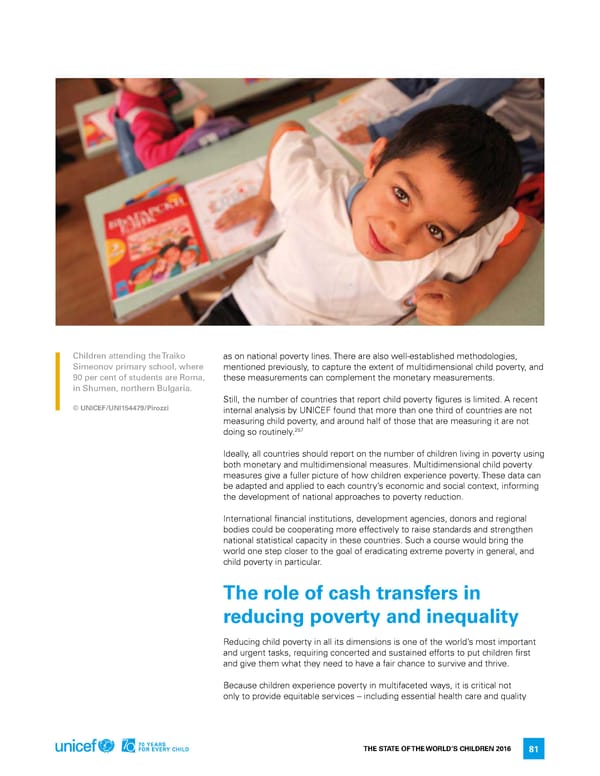Children attending the Traiko as on national poverty lines. There are also well-established methodologies, Simeonov primary school, where mentioned previously, to capture the extent of multidimensional child poverty, and 90 per cent of students are Roma, these measurements can complement the monetary measurements. in Shumen, northern Bulgaria. Still, the number of countries that report child poverty figures is limited. a recent © UNICEF/UNI154479/Pirozzi internal analysis by UniCef found that more than one third of countries are not measuring child poverty, and around half of those that are measuring it are not 257 doing so routinely. ideally, all countries should report on the number of children living in poverty using both monetary and multidimensional measures. Multidimensional child poverty measures give a fuller picture of how children experience poverty. These data can be adapted and applied to each country’s economic and social context, informing the development of national approaches to poverty reduction. international financial institutions, development agencies, donors and regional bodies could be cooperating more effectively to raise standards and strengthen national statistical capacity in these countries. Such a course would bring the world one step closer to the goal of eradicating extreme poverty in general, and child poverty in particular. The role of cash transfers in reducing poverty and inequality reducing child poverty in all its dimensions is one of the world’s most important and urgent tasks, requiring concerted and sustained efforts to put children first and give them what they need to have a fair chance to survive and thrive. Because children experience poverty in multifaceted ways, it is critical not only to provide equitable services – including essential health care and quality The STaTe of The World’S Children 2016 81
 70 Years for Every Child Page 97 Page 99
70 Years for Every Child Page 97 Page 99